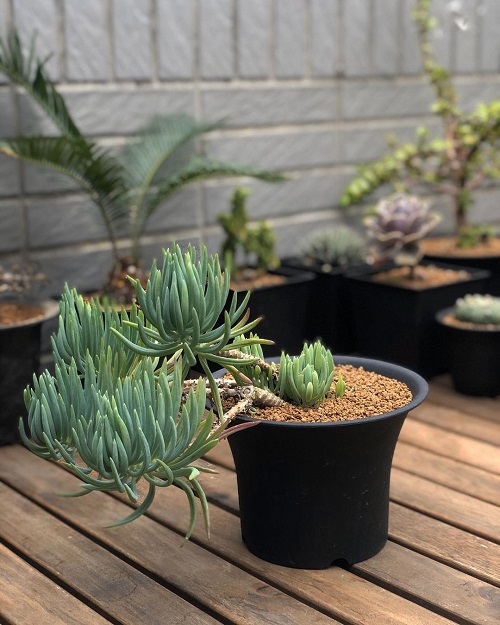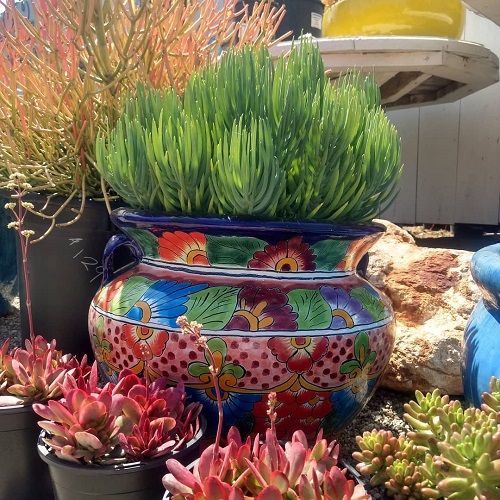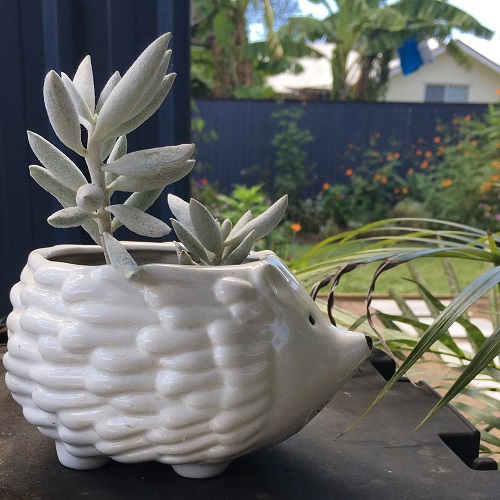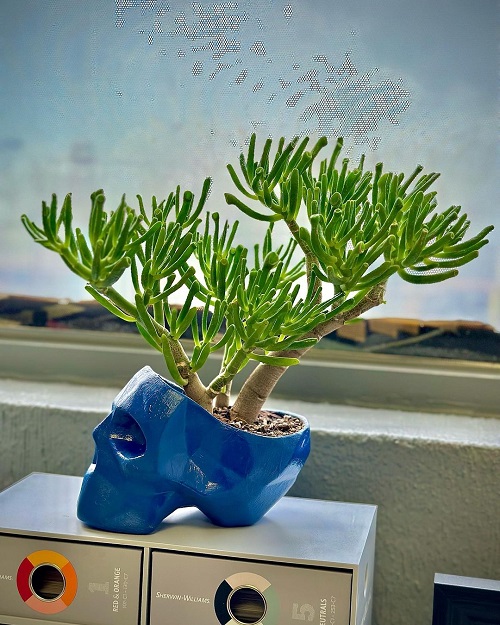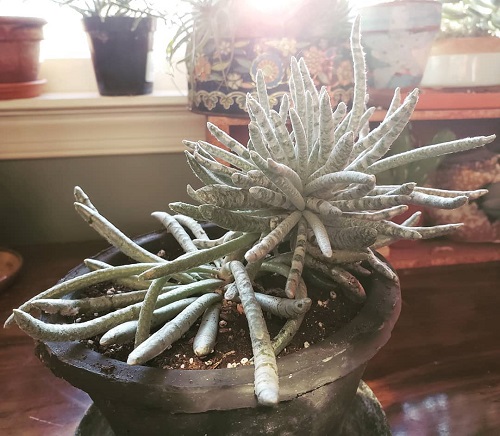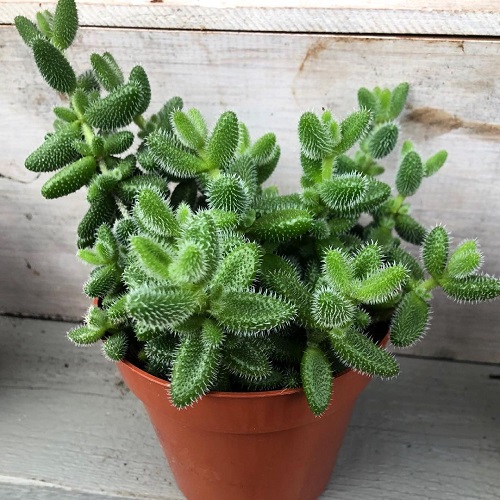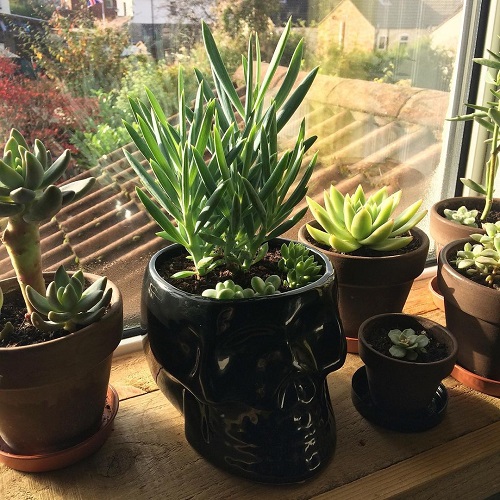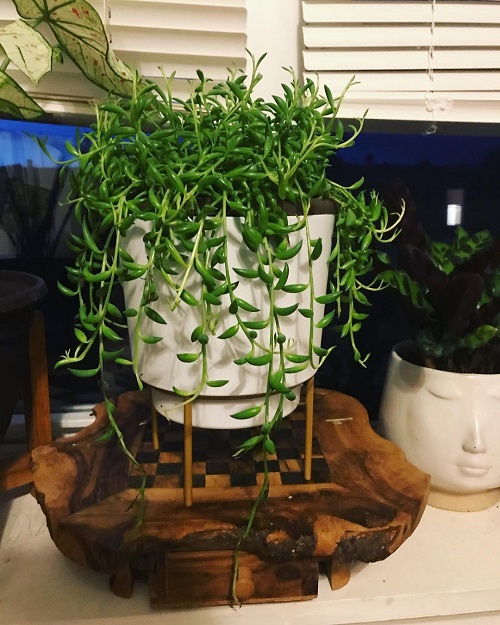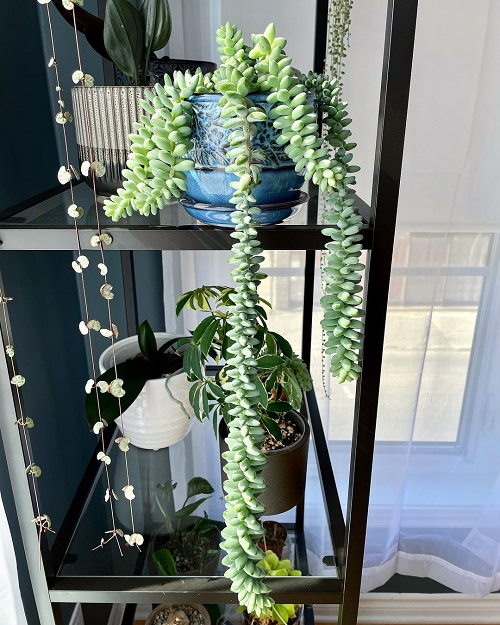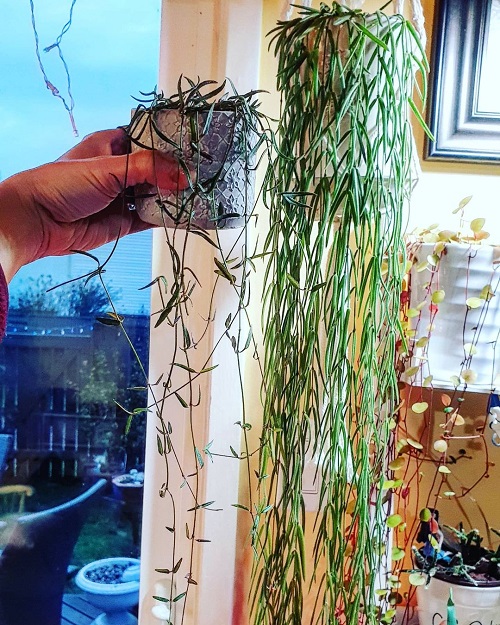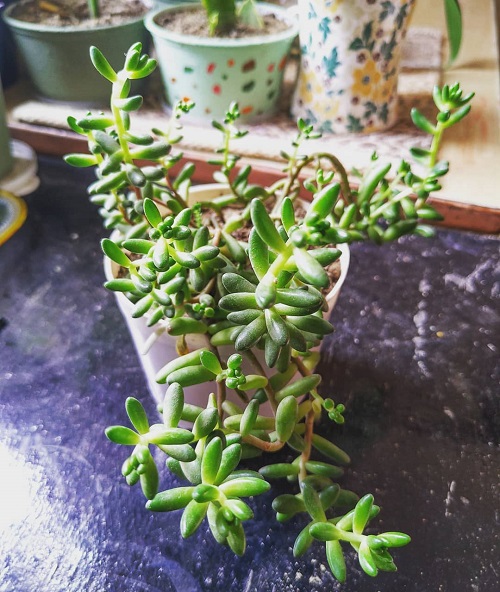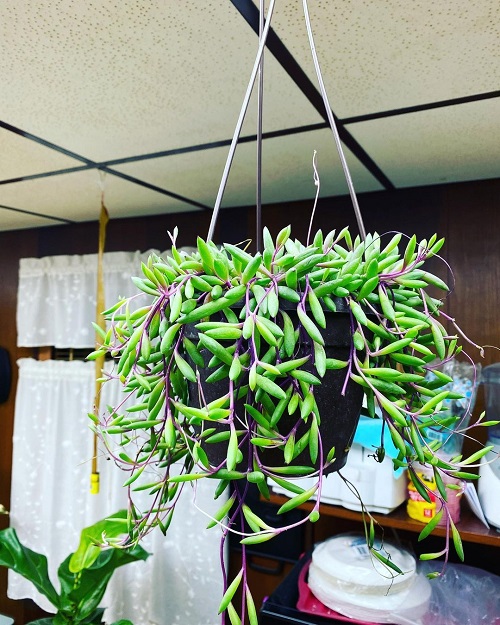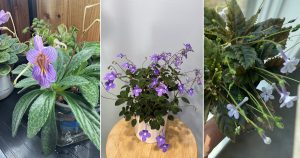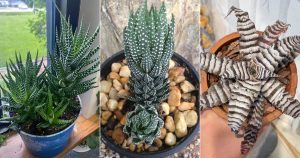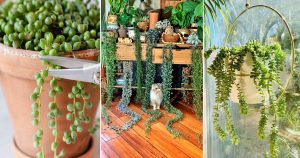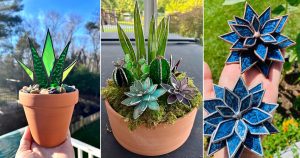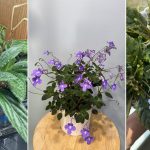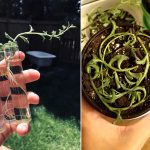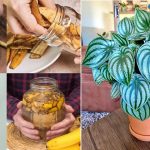Looking for similar veggie-looking plants? If so, you might be interested in learning about Succulents That Look Like Green Beans. Check out!
Read the article to learn more about these succulents, which mimic the appearance of beans in shape and color. While they may not be edible, they will surely delight succulent enthusiasts.
Succulents That Look Like Green Beans
1. Happy Bean Plant
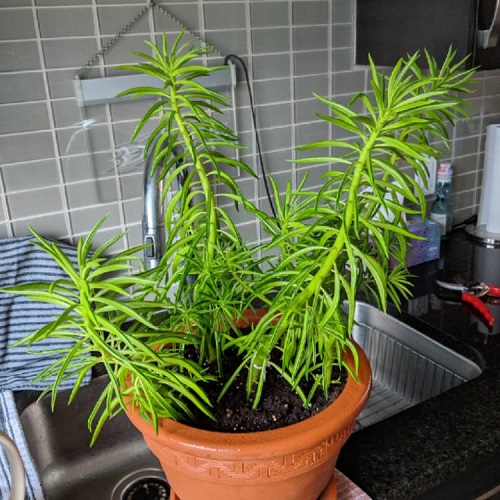
Botanical Name: Peperomia ferreyrae
Happy Bean Plant is known for its unique and distinctive foliage, which is super easy to take care of. It features long, narrow, bean-like succulent leaves that store water. What makes its look unique is its deep groove cuts on the leaves’ tops. It is a safe addition to any indoor space!
Evergreen perennial with a compact shape, up to 12 inches in height. And the greenish flower spikes add to its appealing look. USDA zones between 10-12 are ideal for this plant outdoors. Meanwhile, indoors, it should be kept at temperatures between 65-75°F with moderate to high humidity levels.
2. Senecio Antandro
Botanical Name: Senecio antandroii
The succulent’s name comes from the region where it is native, Antandroy, in southern Madagascar. It belongs to the genus Senecio. Known for its green, bean-like foliage, people often call it a “succulent that looks like green beans.”
Like its other family members, it also has pyrrolizidine alkaloids, which act as a natural biocide either to deter or kill animals who try to feed on them.
3. Narrow Leaf Chalksticks
Botanical Name: Senecio vitalis
Isn’t it one of the most beautiful succulents that look like beans that catches attention with its great ornamental appeal. Its cylindrical, glaucous-gray finger-like leaves grow quickly, and you will soon see its finely textured foliage all around. During spring and fall, creamy-white flowers appear just above the foliage.
Narrow Leaf Chalksticks can grow up to 18-24 inches tall and 3-5 feet wide. It is a winter-growing and summer-dormant plant. Keep your dogs or cats away from this; it’s toxic!
4. Cocoon Plant
Botanical Name: Senecio haworthii
Gardener title this plant the prettiest plant of its genus due to its fleshy, cylindrical, pure white leaves with silvery-white hairs all over. They look a lot like red sword beans in shape.
This little perennial branched shrub can reach up to 30 cm tall and rarely produces bright yellow flowers. If you want to multiply its beauty and make it more white, then keep it under glass, provide minimal watering and two to three hours of direct sunlight daily, followed by dappled shade.
5. Green Bean Jade
Botanical Name: Crassula ovata ‘Gollum’
This jade plant cultivar’s tube-shaped foliage, with a trumpet-like opening, resembles clusters of beans growing in a pot. It was named after the Gollum character in the Lord of the Rings books.
Native to South Africa, it is a low-maintenance succulent that grows well in warm temperatures, bright sunlight, and well-draining soil. However, it is highly toxic, so keep your pets away from it!
6. Woolly Senecio
Botanical Name: Senecio haworthii
Woolly Senecio is a small growing succulent, nearly up to 12 inches tall, and features a rosette-shaped body with long, bean-like, green leaves covered with a silvery-white coating. Basically, This coating developed to protect itself from the harsh sun in its native regions, South African habitats.
If you want to grow it with cuttings instead of seeds, it would be easier and faster, as it needs consistent moisture and warm temperatures to germinate. Simply take the cutting during the growing season, i.e., from fall to spring, and plant it in a well-draining, sandy soil in a sunny spot. In winter, bring the plant indoors, as it can’t tolerate the cold well.
7. Sticks of Fire
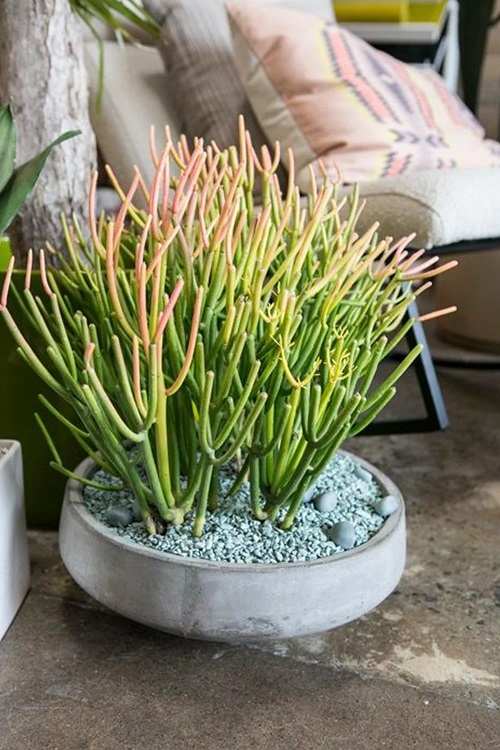
Botanical Name: Euphorbia tirucalli
Also known as Indian Tree Spurge, this succulent is found in the southern parts of Florida and California. It is a spineless shrub or tree with brown branches that initially grow green as if the plant is producing green beans or pencil-like branches.
Grown for its drought-tolerant potential, it varies in size according to the place it is grown. Outdoors, particularly in warm climates, can reach up to 30 feet. While indoors or in temperate regions, it remains comparatively small. However, the plant needs dry temperatures, around 50°F in the evening and 75 °F in the day, to flourish well.
Caution: Handle this plant with gloves because its milky white latex sap is present in all parts, which can lead to dermatitis. Avoid eating its parts, and keep your pets and kids away from it!
8. Pickle Plant
Botanical Name: Delosperma echinatum
The Pickle Plant is known for its slender stems and pairs of bright, thick, fleshy, green leaves—which can fool you into thinking they resemble mini beans! It produces white or yellow blooms most of the fall and summer, starting in late winter.
Its foliage stays green year-round, which is ideal for brightening your area. You can plant it from cuttings anytime in spring, summer, or fall; it is easy to grow! Just give it full sunlight and avoid wet soil, especially in winter.
9. Blue Chalksticks
Botanical Name: Senecio serpens
Blue Chalksticks is a succulent plant popular among gardeners due to its ornamental appeal in gardens and indoor containers. It offers unique colors and low-maintenance requirements. However, it is a slow-growing, ground-hugging plant that spreads through mats or trails.
It has blue-gray stems and leaves that resemble chalk sticks, just like its common name. But it also resembles a bunch of slender, stretched-up beans. Keep your pets away from this toxic specimen!
10. String of Bananas
Botanical Name: Senecio radicans
The appearance of the String of Banana leaves can be called a succulent version of green beans because of their elongated, curved shape and bright green color. It is a fast-growing and easy-to-care-for plant—an ideal hanging houseplant.
Not only this, but it is also low maintenance and drought tolerant, requiring only a sunny spot or a warm window to thrive. You can easily propagate it through stems or leaf cuttings. Note that, like many other succulents, it contains toxic compounds, so handle it with care and keep your pets and children at bay!
11. Burro’s Tail
Botanical Name: Sedum morganianum
Burro’s Tail, native to southern Mexico, is a long-lived, tender, trailing succulent that thrives best as a houseplant. Features perennial stems and blue-green, elongated, cylinder-shaped leaves with pointed ends that look like green beans. However, they are more fleshy and thick!
If you want to grow it, the best way is to grow it in containers so that the stems can trail down vertically, showcasing their unique shape. Outdoors can be used as a hanging plant but must be protected from strong winds. Bright light and full sun are ideal; avoid intense light. With proper care, you can make it flourish beautifully.
12. String of Needles
Botanical Name: Ceropegia linearis
String of Needles is a climbing succulent with slender stems and needle-like foliage that resembles green from a distance. However, its leaves are more curved and twisted, with tangled looks, and are adapted to store water, making the plant drought tolerant.
The plant also produces shades of white to pale magenta flowers from late summer to early fall. The flowers are usually 1.2 inches long and last approximately six weeks—grown in containers or hanging baskets!
13. Pork and Beans
Botanical Name: Sedum rubrotinctum
It is also known as the jelly bean plant because of its short plum leaves and reddish hue, which the plants developed as a defense mechanism against direct sunlight, drought, and cold temperatures. This generally happens during the summer months.
Pork and Beans produce bright yellow blooms from its leaves in mid-summer. Grown due to its ease of maintenance and can tolerate all types of well-draining soil. Can also be planted in pots, hanging containers, rock gardens, or stepping stones.
14. Little Pickles
Botanical Name: Crassothonna capensis
Little Pickles is a low-growing succulent plant desired by gardeners for its mat-forming potential. It not only covers the ground but also nicely fits on wall plantings, seaside gardens, xeriscaping, or rock gardens. The blue-green leaves are oblong, upward-facing, just like the winged beans. Generally, it grows 4 inches tall with 12-16 inches spread.
Overall, maintaining it does not require a lot of effort. Once established, it can thrive well in full sun with well-draining soil and is drought-tolerant.

